Money, money, money! It’s everywhere, but what do you know about Australian banknotes and coins?
- Australia’s coins
- Where are our coins produced?
- Australia’s banknotes
- Where are our banknotes produced?
- Banknote security
- Australian notes and coins fast facts
- References
Australia’s coins
A brief history
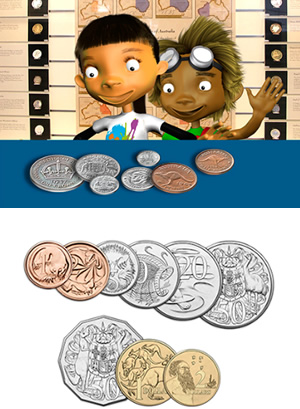
Australia has an interesting coin history. Did you know that until the early 1900s Australia did not have its own currency? We used a mixture of currencies from all around the world until 1825 when the English Parliament passed an Act stating that British coins were to be the only recognised form of currency in Australia.
It wasn’t until 1909 that the relatively new Australian Federal Parliament passed a bill allowing Australia to have our own coins. The first Australian coins were issued in 1910 and were based on the British sterling system of pounds, shillings and pence.
These remained our coins until 1966 when we changed to a decimal currency system and a whole new set of coins were introduced. This included one and two cent coins, the five, ten and twenty cent coins that we still have today and a round fifty cent coin (this changed to the 12-sided coin in 1969). Then, in 1984, a one dollar coin was introduced, followed by a two dollar coin in 1988. The one and two cent coins were removed from circulation in 1992 because they were too expensive to make.
For more information about the fascinating history of Australian coins visit www.ramint.gov.au
About our current coins
Coins have two sides: an obverse (known as heads) and a reverse (known as tails).
In Australia, all coins have a picture of the reigning monarch on the obverse side. This is currently Her Majesty Queen Elizabeth II. The picture on the reverse side is usually something uniquely Australian such as our flora or fauna.

Our five cent coin
The reverse of the 5 cent coin features an image of an echidna. The coin is made of copper and nickel, is circular in shape and has a milled edge (this means it has ridges or grooves). This is our smallest coin.

Our ten cent coin
The reverse of the 10 cent coin features an image of a lyrebird. Like the five cent coin, it is made of copper and nickel, circular in shape and has a milled edge.

Our twenty cent coin
The reverse of the 20 cent coin features an image of a platypus. The coin is made of copper and nickel, is circular in shape and has a milled edge.
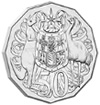
Our fifty cent coin
The reverse of the 50 cent coin features the Australian Coat of Arms.
The original 50 cent coin was made of silver and copper, but this became too expensive to produce, so now it is made of copper and nickel (like the other silver coins). This is our largest coin and our only 12-sided, smooth-edged coin.

Our one dollar coin
The $1 coin was first introduced on 14 May 1984 to replace the one dollar note. Its reverse side features an image of five kangaroos. It is made from copper, aluminium and nickel, is circular in shape and has a milled edge.

Our two dollar coin
The $2 coin was first introduced on 20 June 1988 to replace the two dollar note. Its reverse side features an image of an Australian Aboriginal elder, the Southern Cross and an image of Australian flora. Like the $1 coin, it is made from copper, aluminium and nickel, is circular in shape and has a milled edge. Even though the two dollar coin is the highest value coin, it is only slightly larger than the five cent coin.
Where are our coins produced?
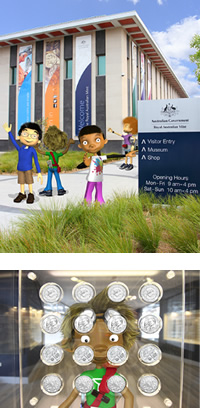
All of Australia’s circulating coins are produced at the Royal Australian Mint (the Mint) in Canberra. The Mint officially opened in 1965 and since then has produced over 15 billion coins.
Amazingly, the Mint now produces approximately 2 million coins per day. As well as making all of our circulating coins, the Mint produces coins for other countries and medals, medallions or tokens for national or international private clients.
The Mint also produces collector and investment coins. Collector coins are legal tender (which means you can use them to buy things), but are produced to be used as gifts or part of a coin collection. These coins often have interesting images and can even be different colours or finishes to the regular circulating coins.
Investment coins are the most valuable product produced at the Mint. These coins are often made of precious metals, can be different shapes and colours and there may only be a small number produced.
The Royal Australian Mint is a great place to visit. If you visit on a weekday, you might see the coins being produced. Make sure you check out ‘Titan’ and ‘Robbie’, the robots working in the circulating coin hall. These amazing robots are one of the reasons the Mint can produce so many coins.
Australia’s banknotes
A brief history
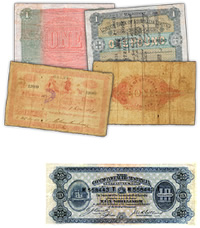
The discovery of gold in Australia in 1851 led to the minting of the first Australian gold coins and this started the development of the banking industry. At this time, banks began to issue their own banknotes, but people were wary of these (they didn’t trust them), especially after many banks failed in 1893. In 1910, an act was passed to say that the Commonwealth Treasury would be responsible for issuing Australian banknotes and the State-issued notes were no longer legal.
By 1 May 1913, the first Australian banknotes (ten shilling notes) were ready for printing at a printing works in Melbourne.
Australia’s economy and population were growing very quickly and the printing press could not keep up with the demand for banknotes. So, in 1942 a new factory was planned for Fitzroy, Victoria. This premises printed notes until 1981 when a new press works was opened in Craigieburn, also in Victoria. This premises, named ‘Note Printing Australia’, still prints banknotes today.
You can find out more about Note Printing Australia at www.noteprinting.com
About our current banknotes
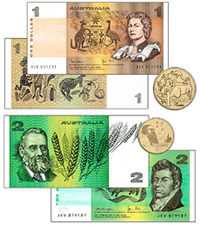
There are currently five different Australian banknotes in circulation, but at the time when Australia changed to decimal currency in 1966, there were only four notes: $1, $2, $10 and $20. The $5 note followed in 1967, a $50 note in 1973 and finally, the $100 note was released in 1984.
The $1 and $2 notes stopped being issued in 1984 and 1988 (respectively) as Australia now had these denominations as coins.
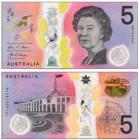
Our $5 note
The $5 note is purple and has a portrait of Queen Elizabeth II and an image of Parliament House with its Forecourt Mosaic. The note also features Prickly Moses Wattle and the Eastern Spinebill. The new polymer $5 notes were issued on 1 September 2016.
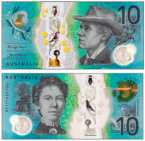
Our $10 note
The $10 note is blue and has a portrait of poet AB ‘Banjo’ Paterson on one side and Dame Mary Gilmore on the other. It also features Bramble Wattle, the Sulphur-crested Cockatoo and various images from the poetry of Paterson and Gilmore. The new polymer $10 notes were issued on 20 September 2017.
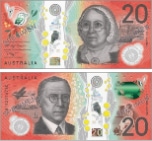
Our $20 note
The $20 note is orange and was released into circulation in October 2019. The new version of the banknote still has a portrait of successful businesswomen Mary Reibey who came to Australia as a convict, but then went on to own successful shipping and trading businesses. The reverse side of the banknote has a portrait of Reverend John Flynn who was the founder of the Royal Flying Doctor Service.
The Box-leaf Wattle and the laughing Kookaburra also appear on the new $20 note.
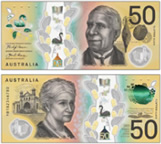
Our $50 note
The $50 note is a mustard yellow colour and has a portrait of David Unaipon, a Ngarrindjeri man who made significant contributions to science and literature. He was Australia’s first published Aboriginal writer with newspaper and magazine articles. He also published a booklet titled Native Legends in 1929.
The other side includes a portrait of Edith Cowan, best remembered as the first female member of Australian parliament.
A new polymer $50 note was released into circulation in October 2018.
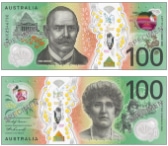
Our $100 note
The $100 banknote is green and was released into circulation in October 2020. One side of the banknote portrays Sir John Monash, who was a commander in WWI and a building and construction engineer. The reverse side portrays Dame Nellie Melba, who is an internationally renowned Australian opera singer. The Golden Wattle and the Australian Masked Owl also appear on the new $100 note.
High security features, similar to those incorporated into the new series $5, $10, $20 and $50 banknotes, have been included in the new $100 note, to help keep it secure from counterfeiting.
All new series banknotes also have a ‘tactile’ feature that you can feel. This feature was introduced to assist vision-impaired people tell the difference between each of the denominations of banknotes.
For more information about the current banknotes visit: banknotes.rba.gov.au
Where are our banknotes produced?
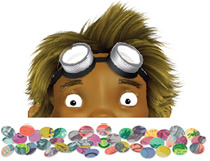
All of Australia’s banknotes are produced by Note Printing Australia (NPA) in Victoria. They are responsible for producing banknotes from other countries and work closely with the Department of Foreign Affairs to make Australian passports too.
Australia’s notes are designed with input from designers, artists, historians and psychologists. Designers are given detailed information about the theme and features that must be included on the note (such as security elements and serial numbers) before they can get started on the design. The design is then taken by Note Printing Australia and converted into a banknote.
The notes are then printed on sheets of polymer substrate in NPA’s printing hall using various printing plates, processes, inks and machines.
The distribution of the banknotes is managed by the Reserve Bank of Australia (RBA), with commercial banks purchasing notes directly from them. The RBA also keeps stores of the banknotes to allow for changes in demand.
Once a banknote is damaged and no longer fit for circulation (our polymer banknotes last a long time, but not forever), they are returned to NPA or the RBA, shredded and turned into little pellets that can be recycled into other products!
Banknote security
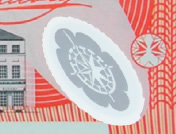
You may have noticed that some of our banknotes have been updated recently and look a little different. This is to make our notes safer and more secure.
Australia has one of the safest and most secure currencies in the world. It is extremely difficult to make counterfeit (copies of) Australian banknotes. To make sure this remains the case, the Reserve Bank of Australia is continually researching anti-counterfeit technologies and then applying these to our banknotes.
The new banknotes have features such as rolling colour effects, top to bottom windows, movement effects when tilted and some tactile features that assist people who are vision impaired. All of these help to keep our currency safe from counterfeiters.
Australian notes and coins fast facts
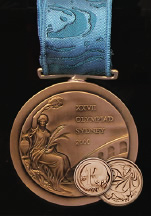
- As you know, all Australian coins have a picture of the reigning monarch on the obverse (heads) side. This is currently Her Majesty Queen Elizabeth II. Queen Elizabeth has been on the throne for many years so there have been a total of five different portraits of her on our coins.
- Did you know that we always see the right side of the Queen on our coins?
- Did you know that many people collect coins as a hobby? Coin collecting is a very old hobby and people do it for different reasons. Some people love the artwork on coins, some love the history and others use it as an investment (as old or rare coins can grow in value). Next time you get your change while shopping, why not check your coins to see if there are any interesting ones!
- Australia was the clever nation that developed the first polymer banknote. These replaced the paper notes and are much more durable and secure. In fact, the notes have so many security features they are one of the safest currencies in the world.
- Have you ever seen a 1 or 2 cent coin? They were removed from circulation in 1992. Interestingly, thousands of the old one and two cent coins were melted down and used to make the bronze medals for the 2000 Sydney Olympic Games. What a clever way to recycle!
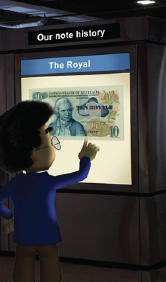
- In February 1966, Australia introduced a new decimal currency system. The new currency needed a name and the original suggestion was ‘Royal’. This option wasn’t very popular and many other ideas were considered, such as ‘Dinkum’, ‘Kiwi’, ‘Austral’ or ‘Merino’. Eventually it was decided to keep it simple and call it the Australian Dollar.
- Before decimal currency, Australia had denominations such as the half-penny, sixpence, shilling and florin. Perhaps an older member of your family still has one or two of these old coins in a coin collection or hidden in a drawer somewhere.
References
- Royal Australian Mint: www.ramint.gov.au
- Reserve Bank of Australia: banknotes.rba.gov.au
- Note Printing Australia: www.noteprinting.com




